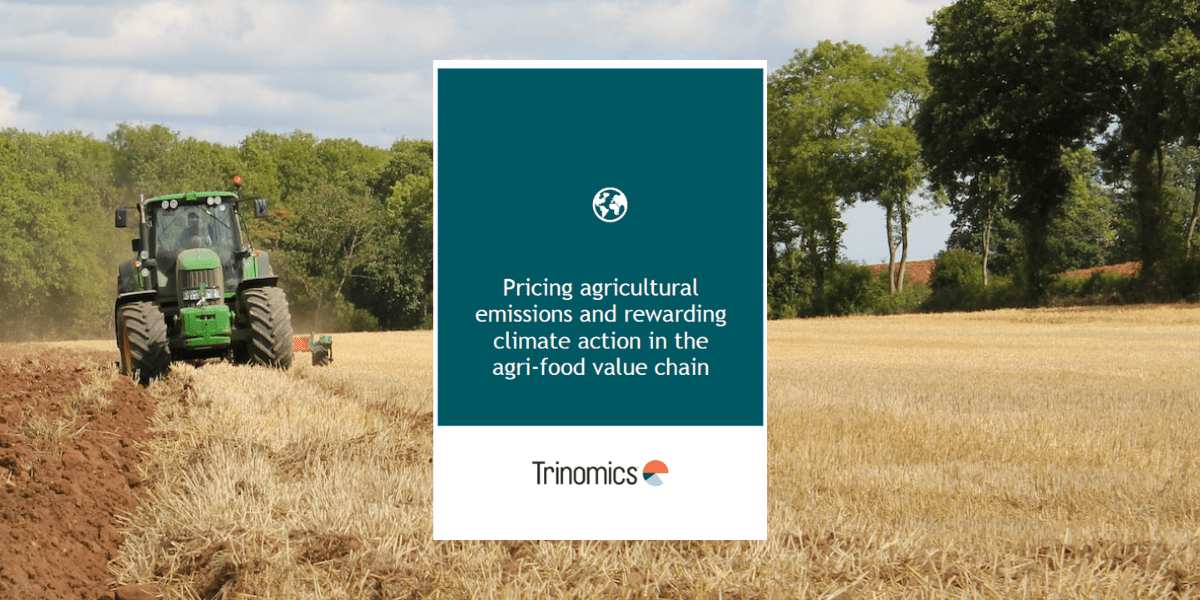AUTHORS: Julia Bognar, Krystyna Springer, Martin Nesbit, Elisabet Nadeu, Nora Hiller, Robin Van Dijk (IEEP); Long Lam, Oana Forestier, Andrea Finesso, Hans Bolscher (Trinomics); Michael Jakob, John Tarpey, Hugh McDonald (Ecologic Institute); Paul Zakkor (Carbon Counts); and Christian Heller (Umweltbundesamt)
An emissions trading system (ETS) for agriculture can provide financial incentives for farmers to adopt more climate-friendly practices. For an on-farm ETS this mainly depends on the emissions covered and cost-effective on-farm mitigation measures available. For an upstream or downstream ETS, the impact will depend on the extent to which incentives are passed on to farms.
This study explores potential options for an emissions trading system (ETS) for the agricultural sector, examining its potential as a policy instrument operationalising the polluter pays principle for agricultural greenhouse gas (GHG) emissions in the EU.
The study presents five distinct ETS options. Each option considers different approaches for: 1) where in the agri-food value chain the point of obligation should be (on-farm, upstream, downstream); and 2) the scope of GHG emissions included (methane, nitrous oxide, and carbon dioxide). The five proposed options are:
- An on-farm ETS which applies to all agricultural GHG emissions, including LULUCF emissions (methane, nitrous oxide, carbon dioxide).
- An on-farm ETS which applies to livestock emissions only (methane, nitrous oxide).
- An on-farm ETS which applies to farms operating on drained peatlands (carbon dioxide, methane, nitrous oxide).
- An upstream ETS which applies to fertiliser and feed producers and importers (methane, nitrous oxide).
- A downstream ETS which applies to meat and dairy processors (methane, nitrous oxide).
The study explores both cross-cutting aspects and unique design features for the five policy options. Potential approaches to monitoring, reporting, and verification (MRV) of emissions are given particular attention, with the study exploring potential solutions to address the complexity of measuring on-farm emissions.
An assessment of the agricultural ETS options finds key strengths and trade-offs to consider. The on-farm options present challenges in the time and effort needed for implementation and administrative complexity due to MRV challenges compared to the off-farm options. However, the on-farm options provide a more direct incentive to reduce on-farm emissions compared to the upstream and downstream options. The upstream and downstream options can facilitate a wider whole-value chain approach to addressing agricultural emissions by incentivising both on and off-farm actions and innovations. They also can offer new vertical arrangements in agri-food value chains through the possibility of generating certified credits. Based on feedback from a stakeholder survey, the downstream and upstream options received overall positive support, while support for the on-farm options was comparatively lower due to concerns over administrative feasibility and potential negative impacts on farm income.
The study concludes with recommendations for moving forward if an ETS for agriculture is to be further considered as a potential policy option. First, there is a need to establish a harmonised on-farm GHG reporting tool in the EU. This tool should incorporate a Decision Support Platform that effectively communicates the mitigation potential of actions in a practical and understandable format. Second, careful planning is required to determine the conditions for the deployment of direct transitional aid in the form of subsidies, grants and loans for farms. A dedicated fund utilising ETS revenues created in conjunction with CAP funds could align agricultural spending towards innovation and farm modernisation, benefitting agricultural holdings across the EU. Additionally, exploring financial opportunities from financial institutions for transitional aid is crucial necessitating the development of risk-sharing mechanisms between public and private financing.
Open questions remain that warrant further research. These include:
- The feasibility of a Carbon Border Adjustment Mechanism for agri-food goods as a means of addressing the issue of carbon leakage
- The implications of tariff rate quotas for an agricultural ETS
- The link between consumer behaviour and the risk of carbon leakage
- The potential impacts of communication and marketing strategies on consumer willingness to reduce meat consumption
- Comparisons of distributional impacts on consumer budgets across income groups and Member States, taking into account the use of ETS revenues
- The policy ‘mix’ needed to support a potential ETS for agriculture as well as facilitate climate mitigation in the sector
Photo by Richard Bell on Unsplash

